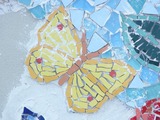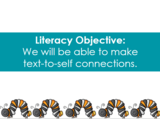
Butterfly adaptations are linked to Greek and Roman mosaics.
- Subject:
- Cross-Curricular
- Measurement and Geometry
- STEM/STEAM
- Visual Art
- Material Type:
- Lesson
- Author:
- Jamie Marquitz
- Amy Erb
- Candice Anthony-Cazenave
- Jessica Brown
- Date Added:
- 12/23/2020

Butterfly adaptations are linked to Greek and Roman mosaics.

Teach about the Fibonacci sequence being a series of numbers and which is found reflected in nature. Students create artwork based on the sequence.

Students will research and plan for creating art while learning to visualize landscapes three-dimensionally. Students will explore and experiment with three-dimensional paper techniques and depict elements in foreground, middle ground and background.

Students will understand that information passes from generation to generation through the ancient tradition of storytelling. Students will recognize that puppetry is a visual expression of storytelling used by many cultures for entertainment, community gatherings, to convey information and to encourage understanding and/or empathy. Students will create a shadow puppet and perform a short puppet show based on a folk tale, tall tale, or poem.

Teachers will be able to use this lesson virtually or in-person! This Google Slide deck lesson can also be downloaded as a PowerPoint! Speaker notes are included which make it easy for teachers or substitutes to teach this lesson!Read Aloud: The VERY Impatient Caterpillar by Ross Burach*Literacy Objective: Students will be able to make text-to-self connections.*Science Objective: Students will be able to identify the stages of the butterfly life cycle.*Art Objective: Students will be able to draw a butterfly and show understanding of symmetry and warm and cool colors. Hampton Oaks Elementary School (Kari Nugent, Annie Schmidt, Lindsey Bruce, Melissa DiAscro, & Rebecca Fausett)